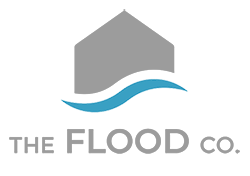Experiencing water damage in your home can be a distressing event. Understanding the steps involved in the water damage restoration process can offer relief and empower you to make informed decisions when it comes to restoring your home.
Step 1: Initial Inspection and Damage Assessment
Quick and Comprehensive Inspection
A thorough inspection allows a professional water damage company to identify the source, and extent of the water damage, which is vital in formulating a strategic restoration plan.
Categorizing and Classifying Water Damage
Professionals categorize the water damage based on the type of water involved. This classification aids in defining the necessary safety measures and restoration approach.
Step 2: Water Extraction and Drying
Urgent Water Removal
Prompt water extraction minimizes the potential damage and helps to prevent mold growth. High-powered pumps and vacuums are often used for rapid water removal.
Thorough Drying and Dehumidification
Even after water removal, moisture can linger in the air and within materials. Professional drying and dehumidification processes are crucial to prevent subsequent damage and mold growth.
Step 3: Cleaning, Repair, and Restoration
Cleaning and Sanitizing
Professionals clean and sanitize the affected areas and belongings. Specialized cleaning techniques and products ensure the complete and safe restoration of your home.
Repair and Restoration
Damage to walls, flooring, and furniture is repaired or replaced. The goal is to restore your property to its pre-damage state.
Why Should The Flood Company be Your First Call in Centerville, UT?
24/7 Availability
Disaster doesn’t wait for convenience. At The Flood Company, we’re available 24/7 to respond to your emergencies.
Free Consultations and Inspections
Get started with a FREE phone consultation and free inspections for insurance-covered events.
Financial Support
We offer financing options, plus allow zero down payment with insurance direct billing to make the restoration process stress-free.
Restoration Complete: The Journey to a Restored Home
Understanding the steps of the water damage restoration process can help you regain control during a difficult time. With The Flood Company, you have a reliable partner that stands ready to restore not just your property, but also your peace of mind.
If you’re dealing with water damage, don’t wait. Call The Flood Company at (801) 316-8362 or visit our website now to get a fast quote! With us, you’re not just restoring your home, you’re reclaiming your life.
Frequently Asked Questions Regarding Water Damage Restoration Process
Facts about Water Damage Restoration Process
- Assessment and Inspection: The first step in the water damage restoration process involves a thorough assessment and inspection of the affected area to determine the extent of the damage and the best course of action.
- Water Removal: Using specialized equipment like pumps and vacuums, professionals remove standing water from the affected area to prevent further damage and mold growth.
- Drying and Dehumidification: After water removal, the area is dried and dehumidified using industrial-grade air movers and dehumidifiers to eliminate any remaining moisture.
- Cleaning and Sanitizing: All affected surfaces and belongings are cleaned and sanitized to remove contaminants and prevent mold and bacterial growth.
- Mold Remediation: If mold is detected, professionals will perform mold remediation to remove and prevent mold growth, ensuring a safe and healthy environment.
- Structural Repairs: Any structural damage caused by water is repaired, including drywall, flooring, and other building materials that may have been compromised.
- Content Restoration: Personal belongings and furniture are restored, cleaned, and deodorized to salvage as much as possible.
- Monitoring: Continuous monitoring of the drying process ensures that all moisture is removed and that the area is completely dry before proceeding with further repairs.
- Final Inspection: A final inspection is conducted to ensure that all restoration work has been completed to the highest standards and that the area is safe for occupancy.
- Documentation and Insurance Claims: Detailed documentation of the damage and restoration process is provided to assist with insurance claims, ensuring that all necessary information is available for a smooth claims process.
Other related articles:
- Water Damage Evaluation and Assessment Services
- Beat the Freeze: How a Disaster Cleanup Company Mitigates Water Damage from Snow
- Starting the New Year Right: Post-Holiday Water Damage Restoration Tips
- Residential Water Damage Centerville, Utah Repair & Restoration Services
ive-Guide.pdf” target=”_blank” data-type=”link” data-id=”https://thefloodco.com/wp-content/uploads/thefloodco.com-What-are-the-Steps-of-the-Water-Damage-Restoration-Process-Your-Comprehensive-Guide.pdf” rel=”noreferrer noopener”>Download PDF

